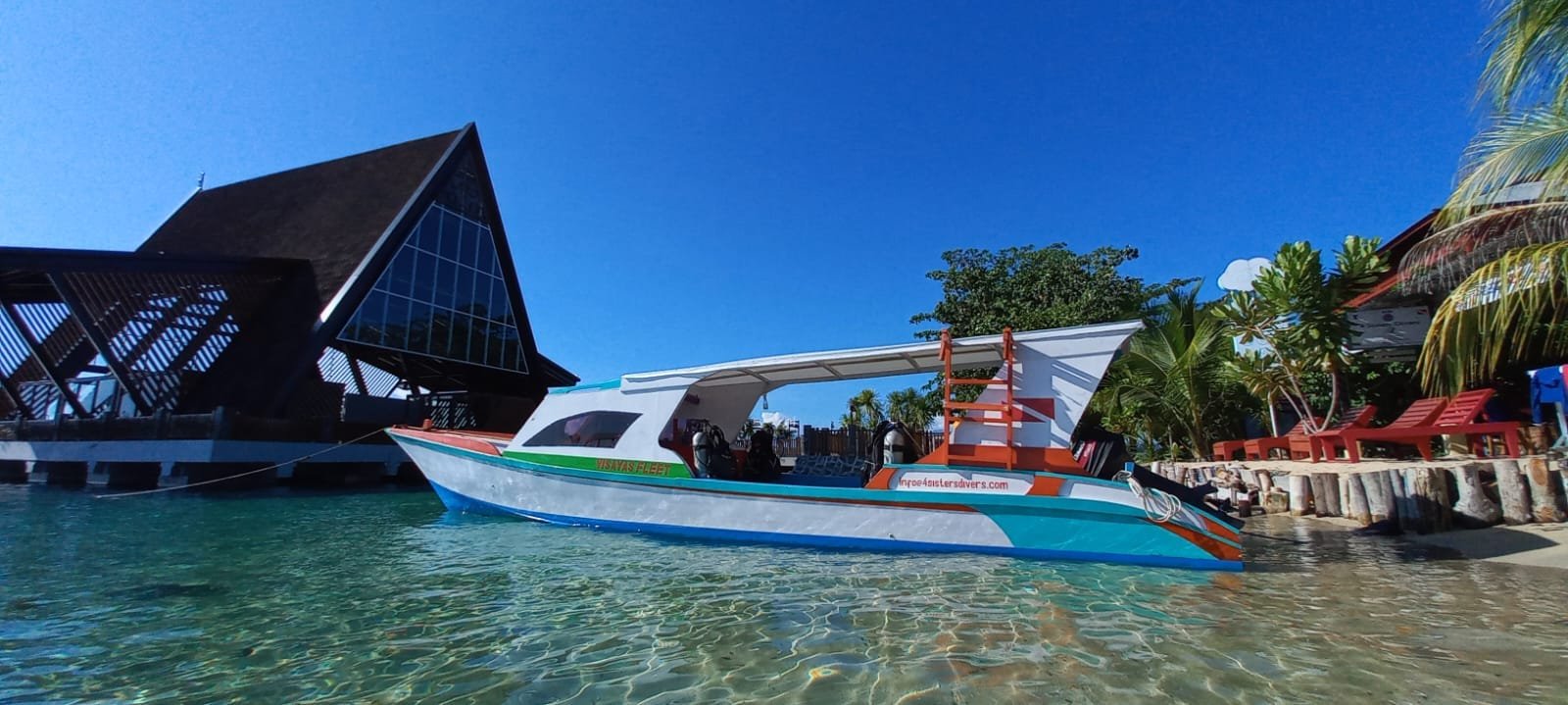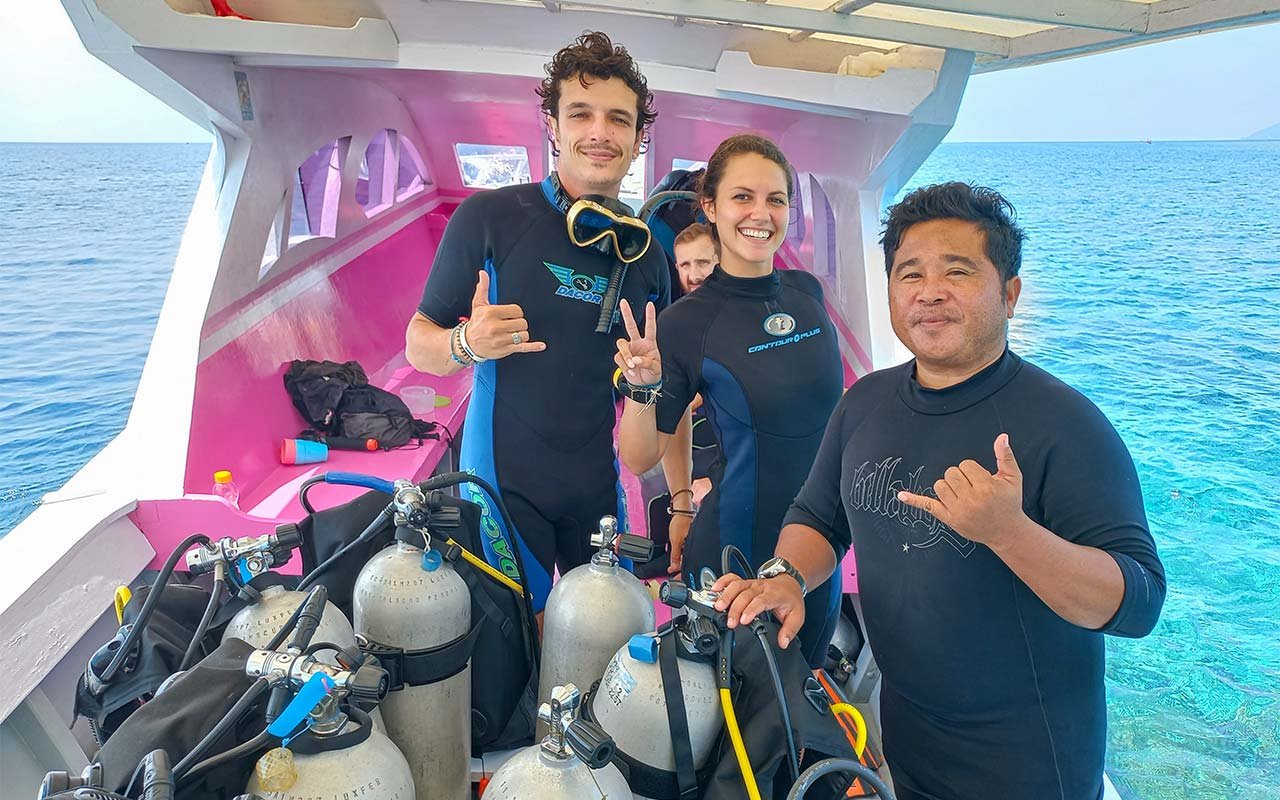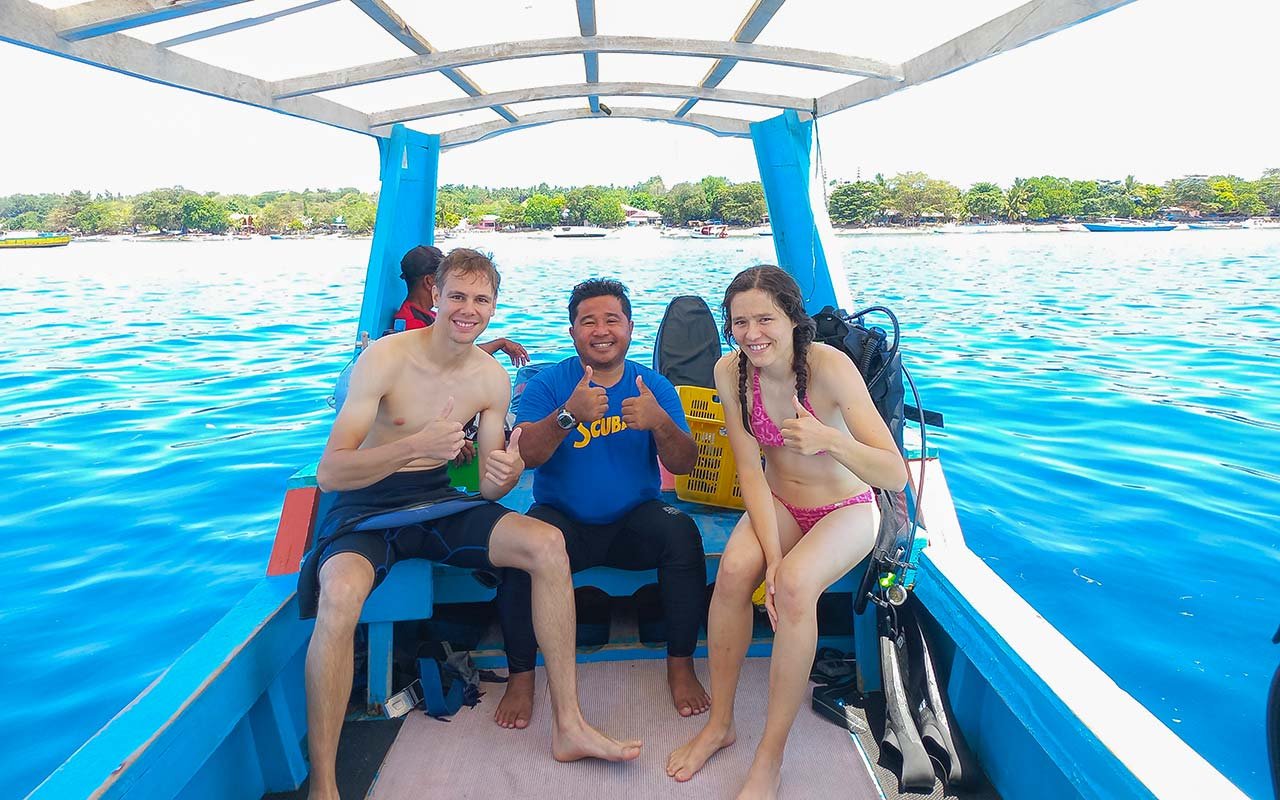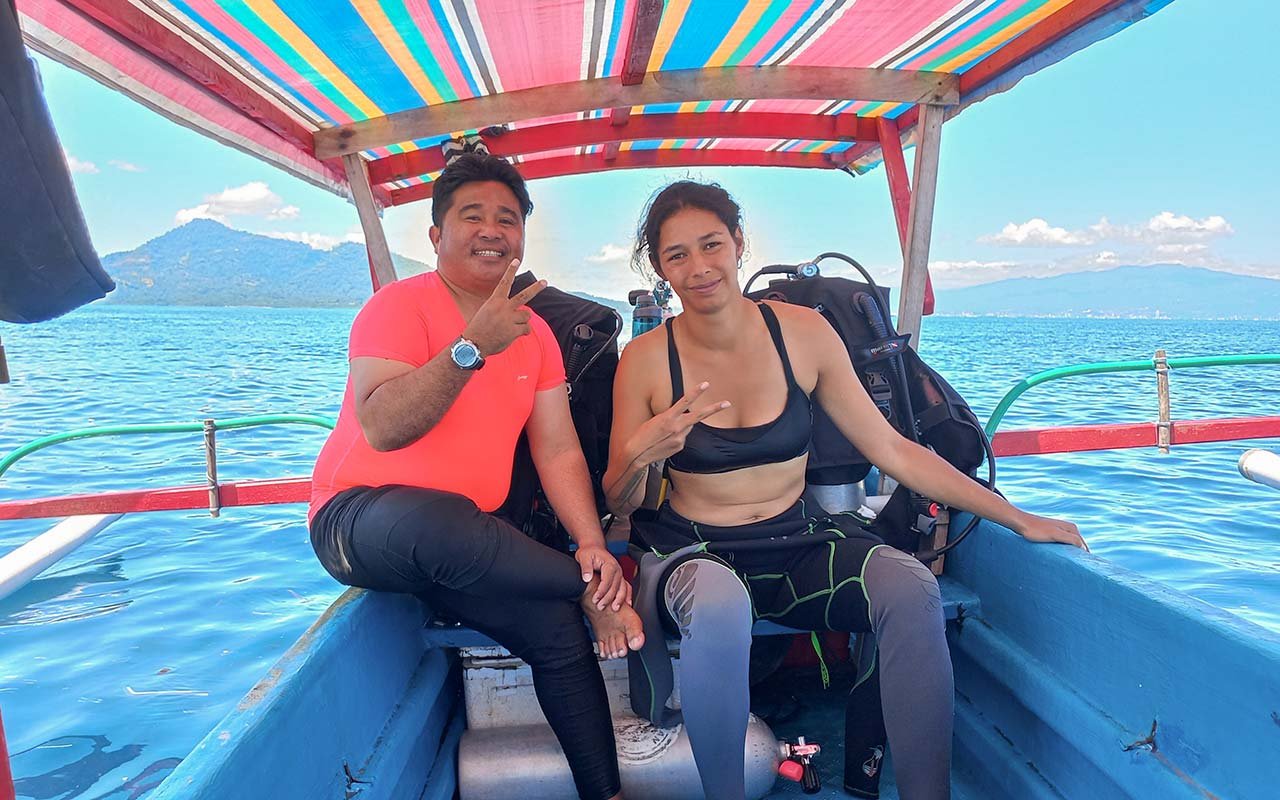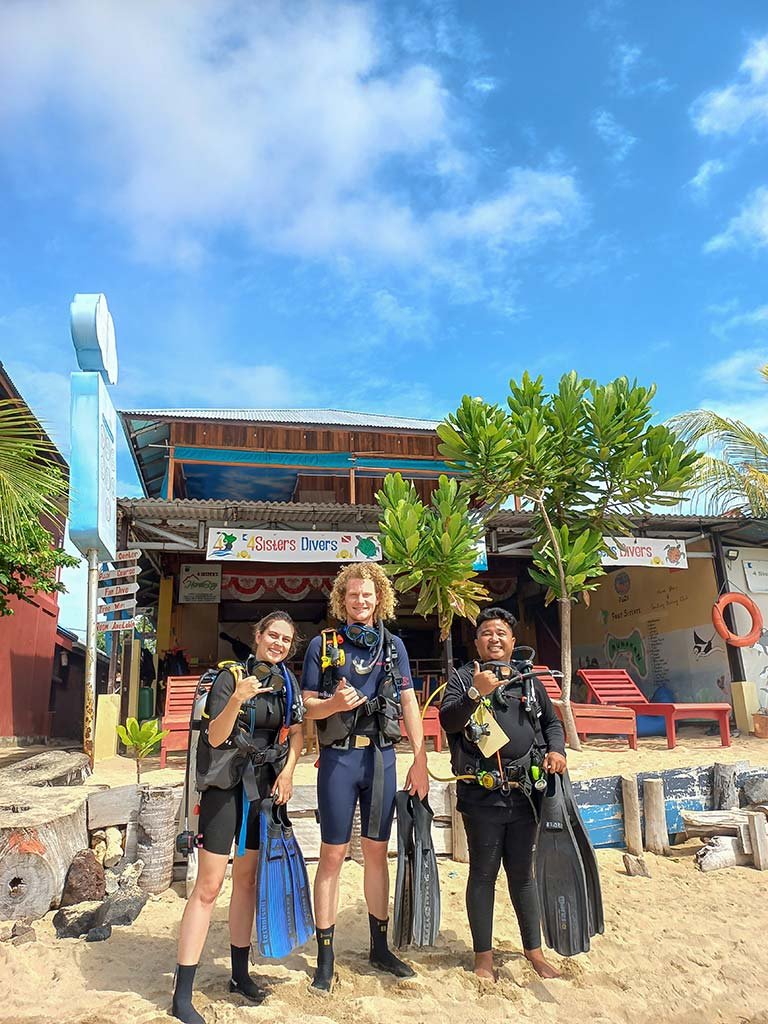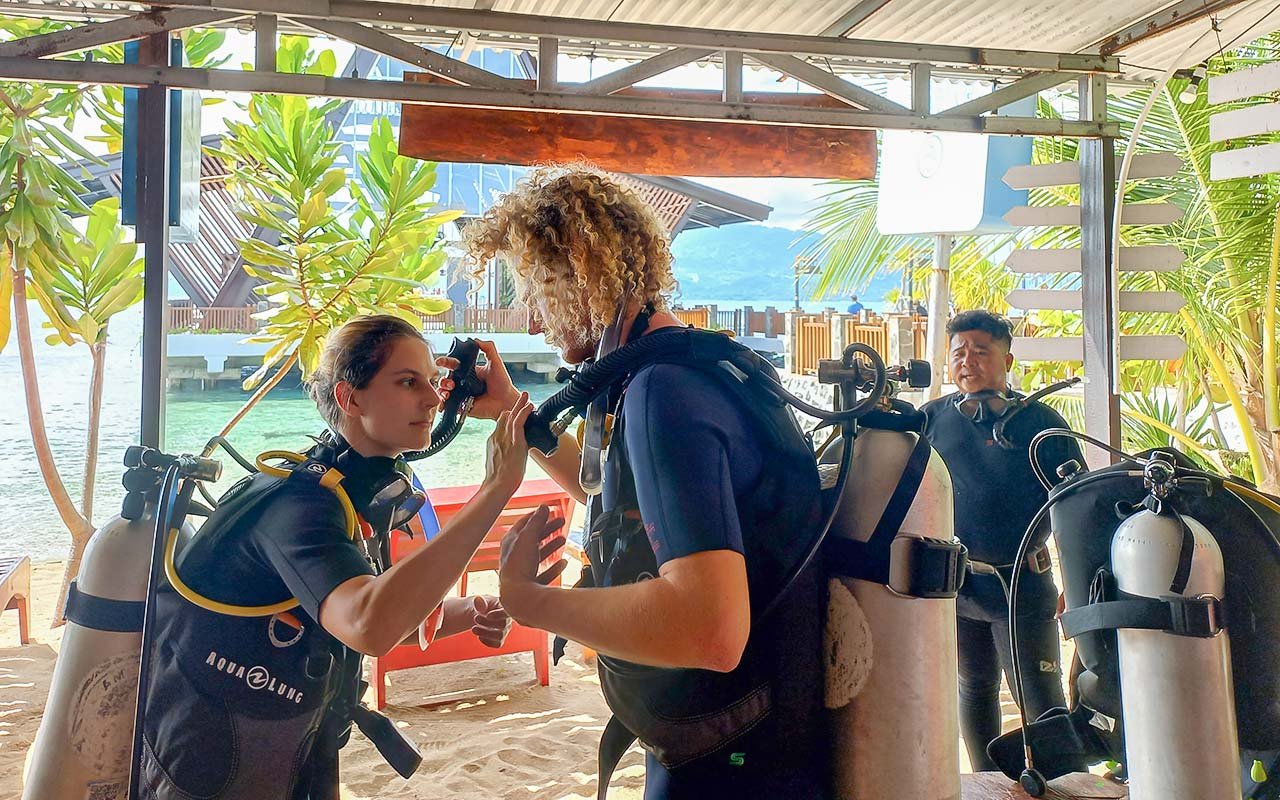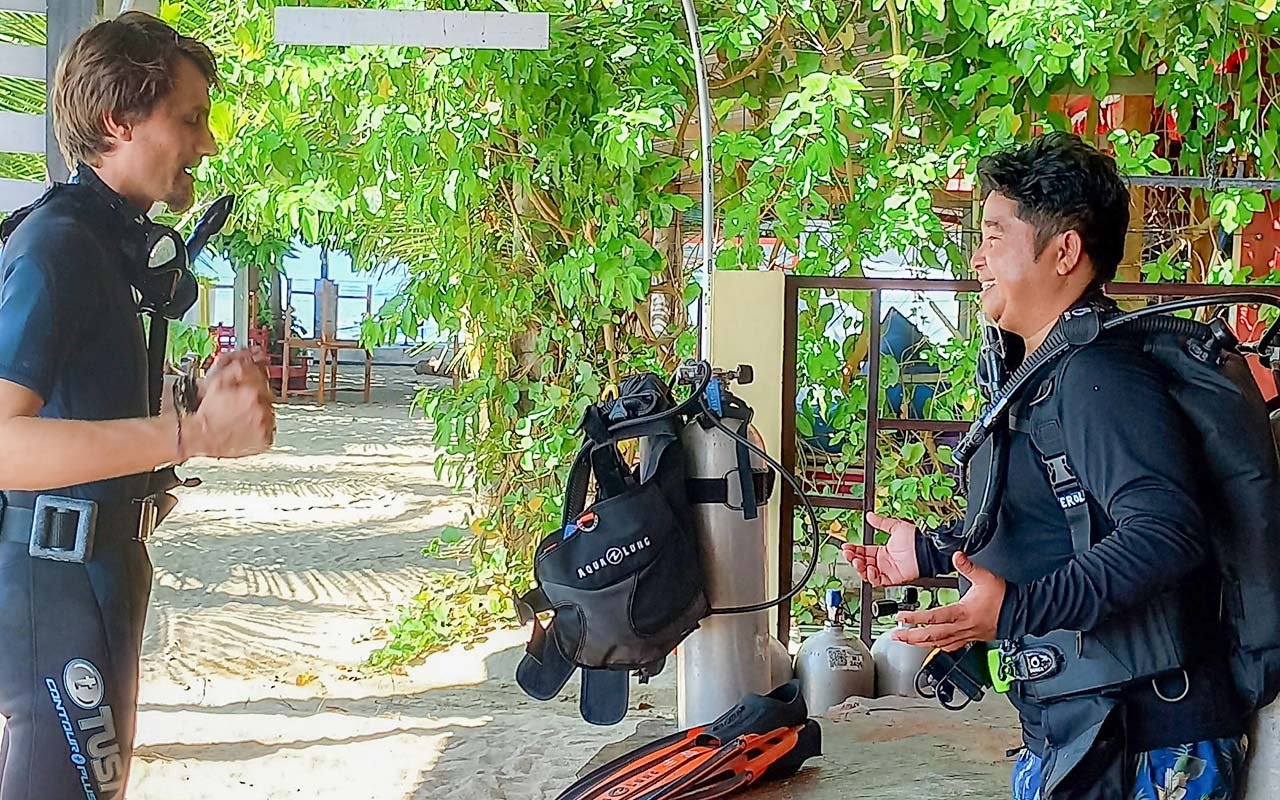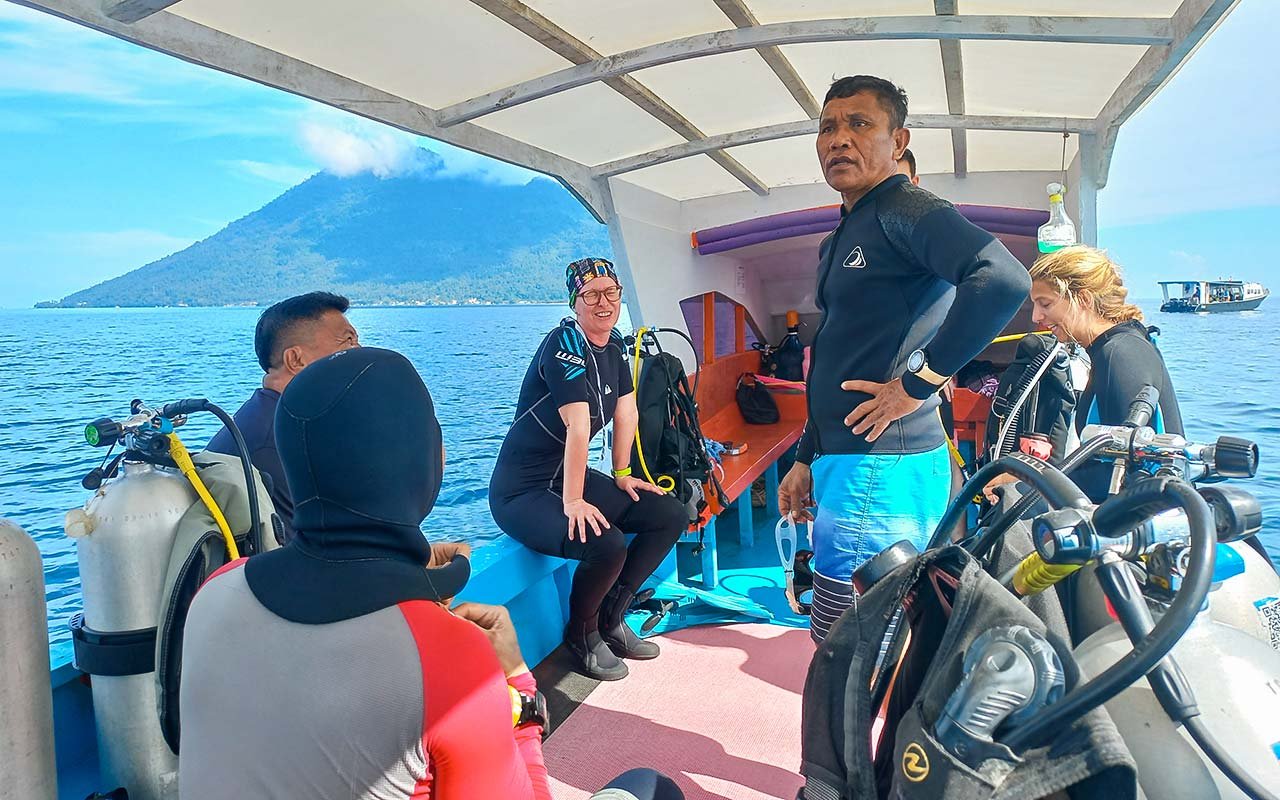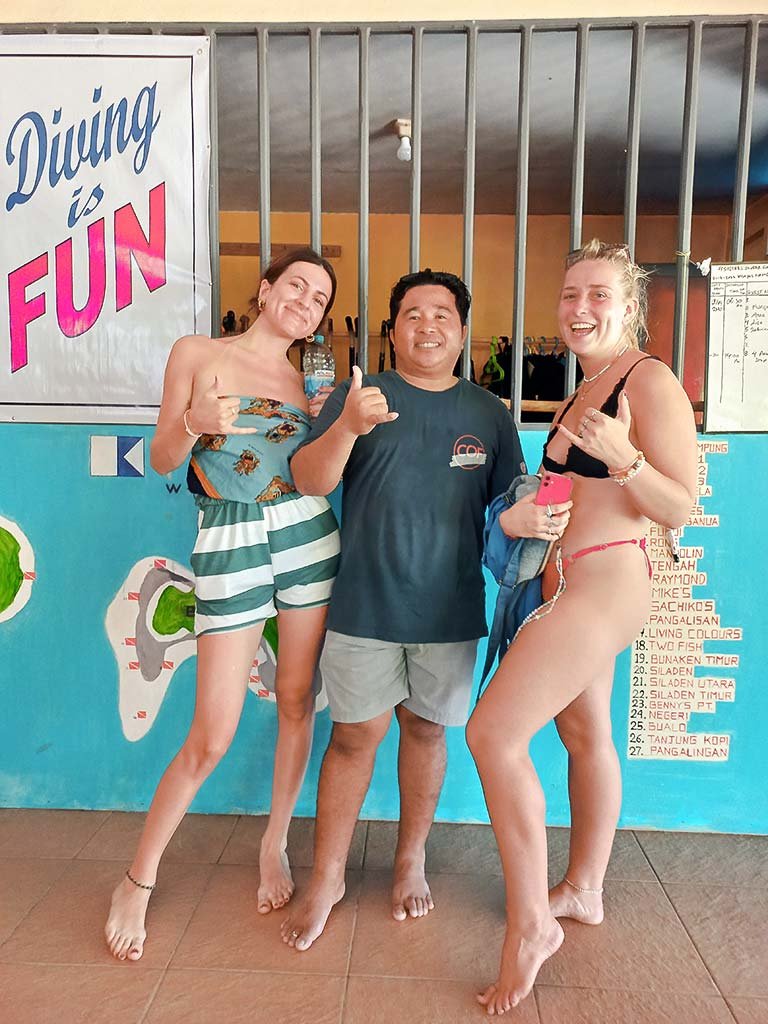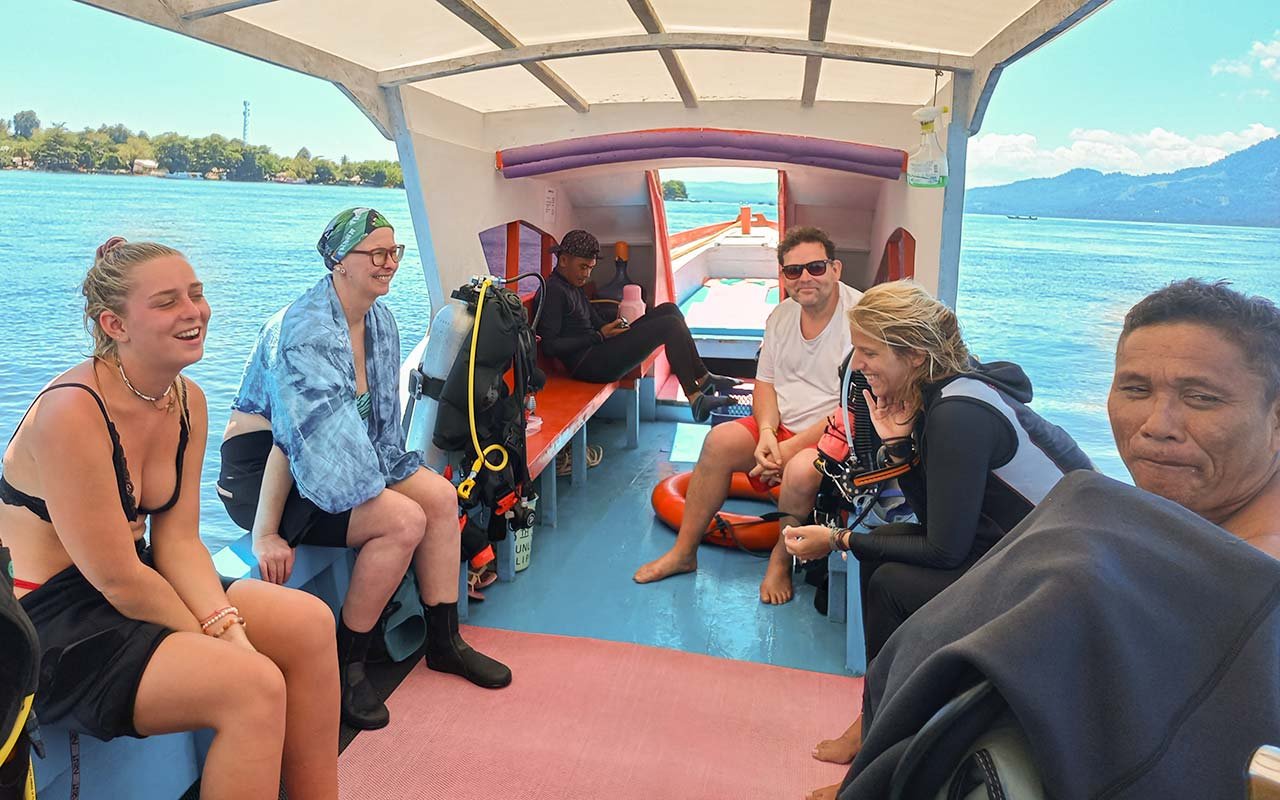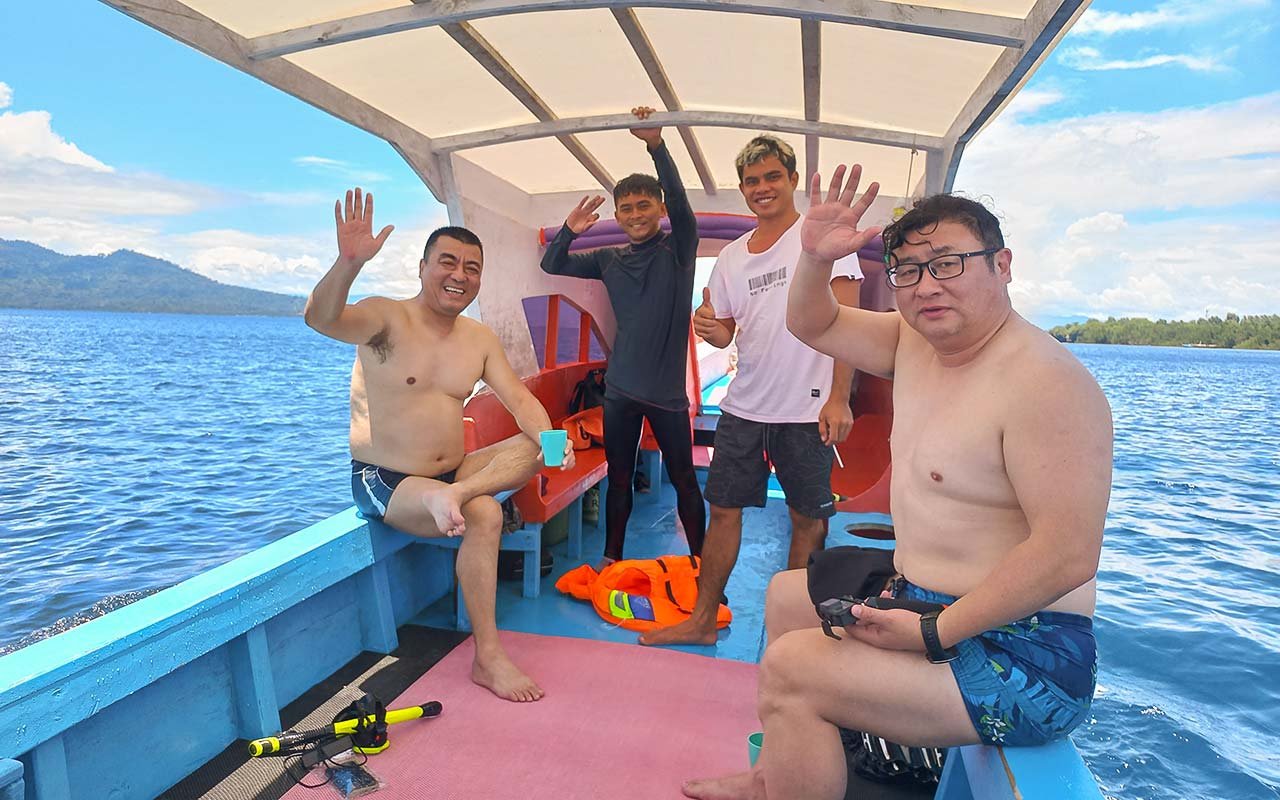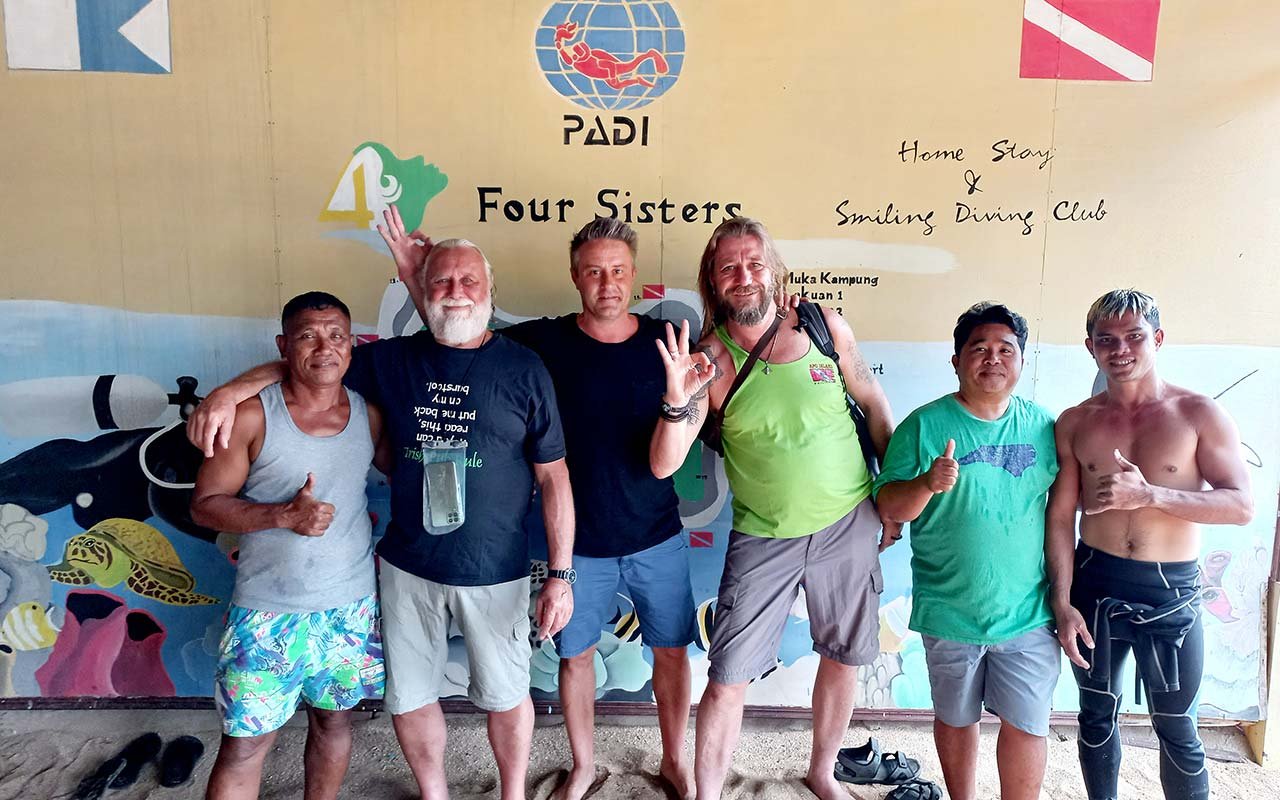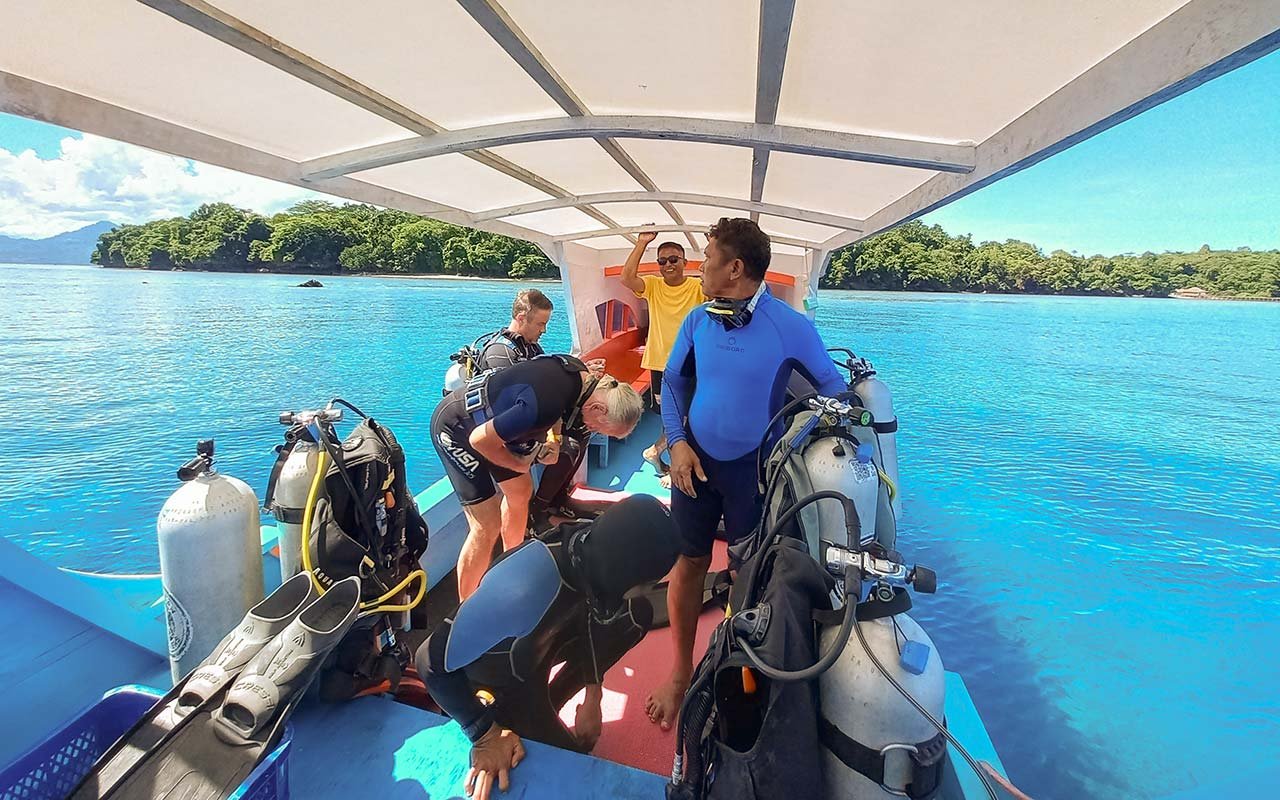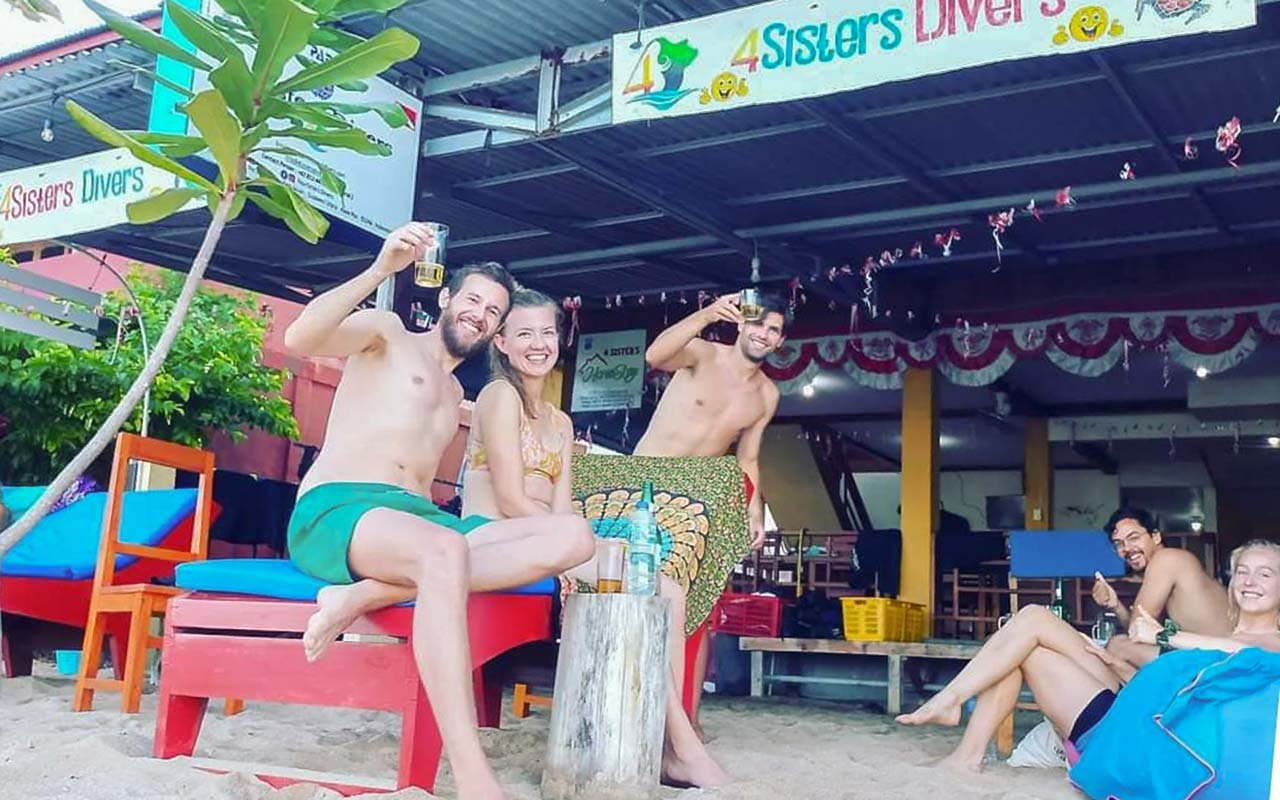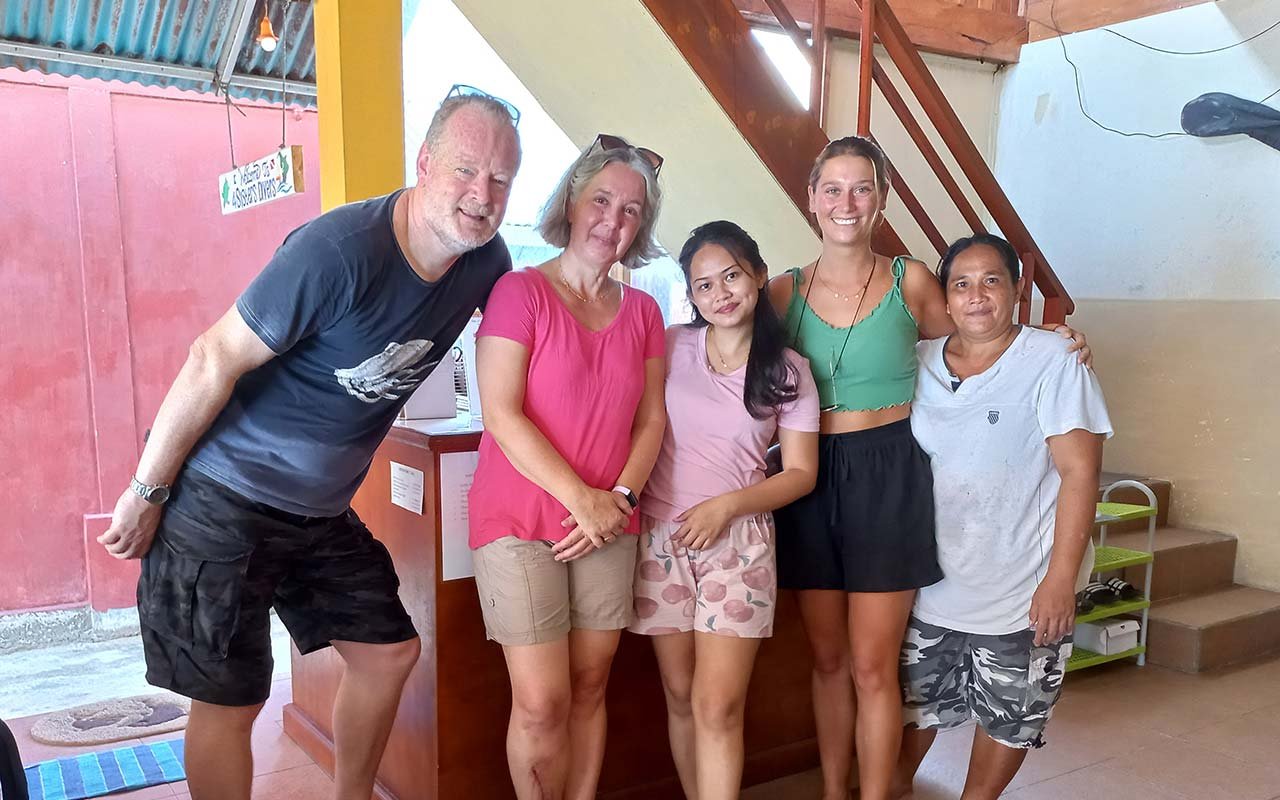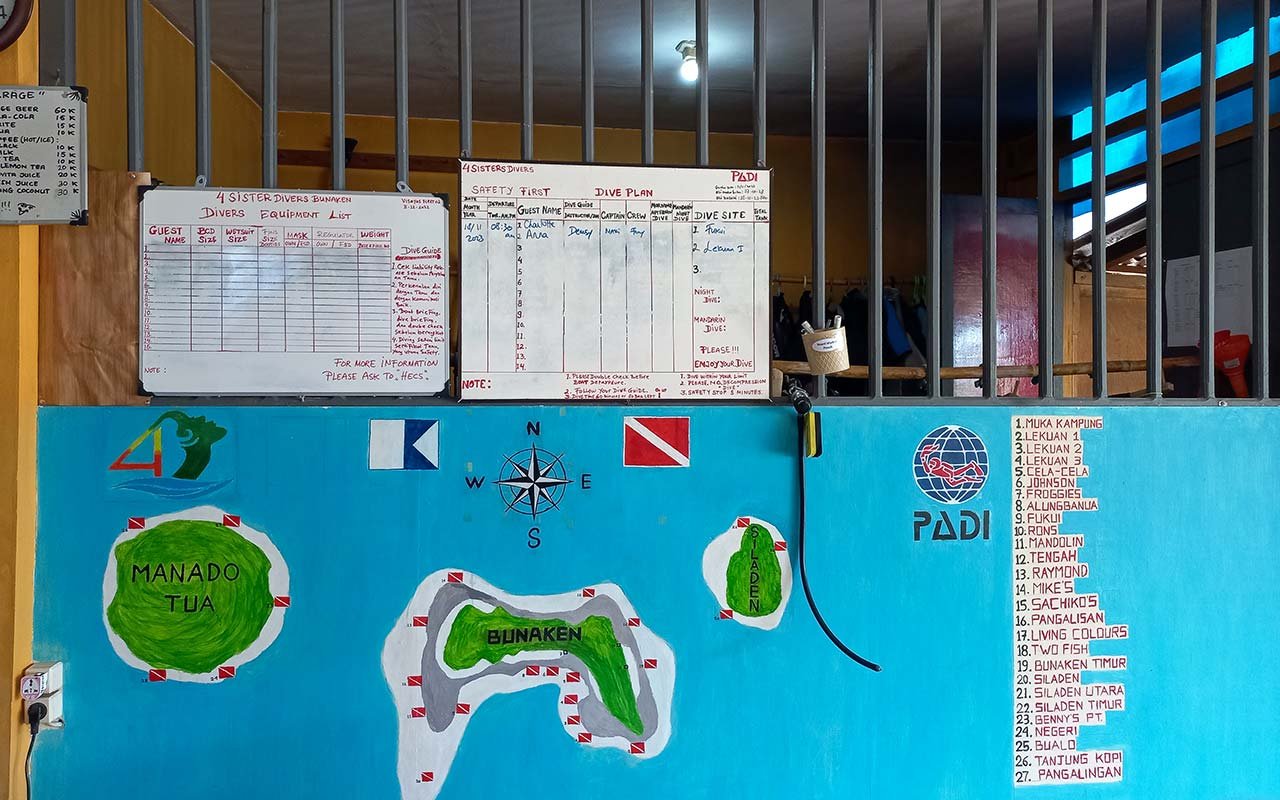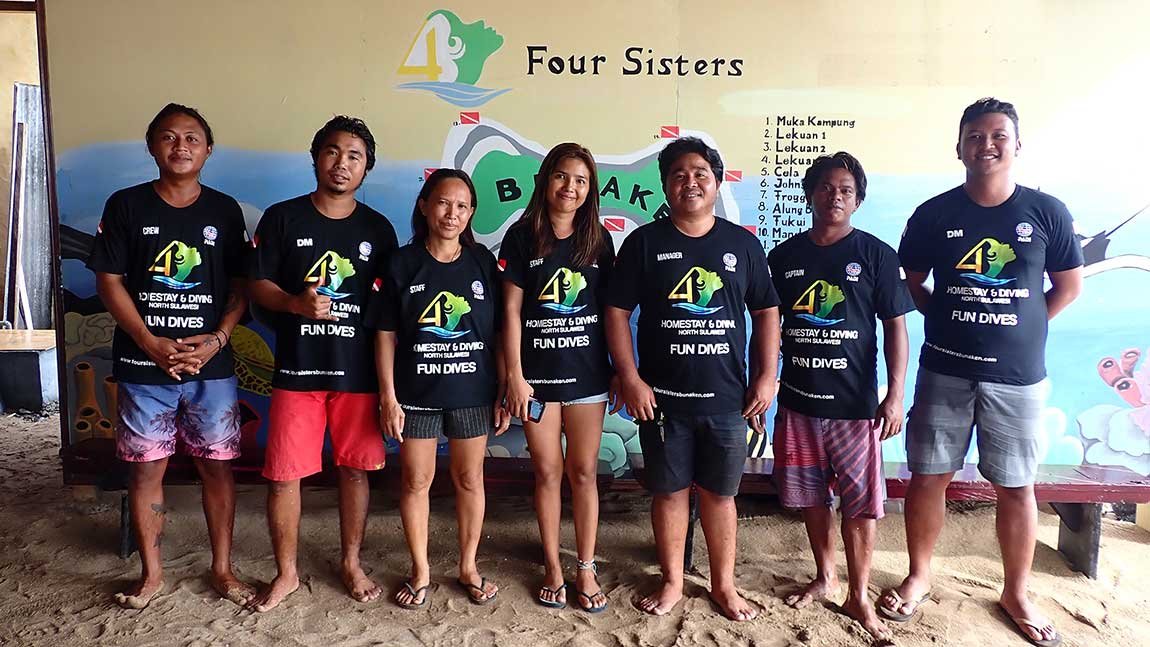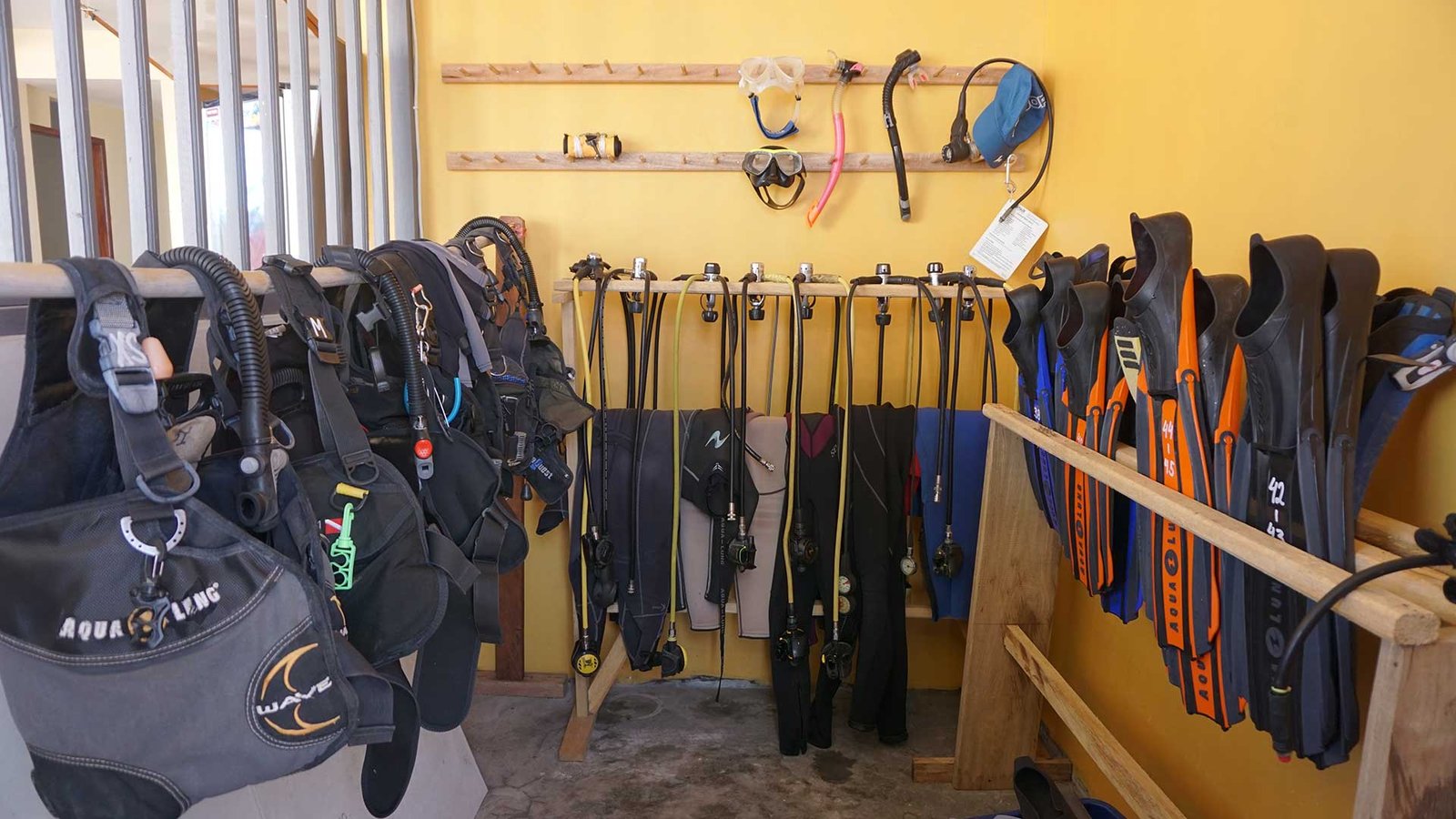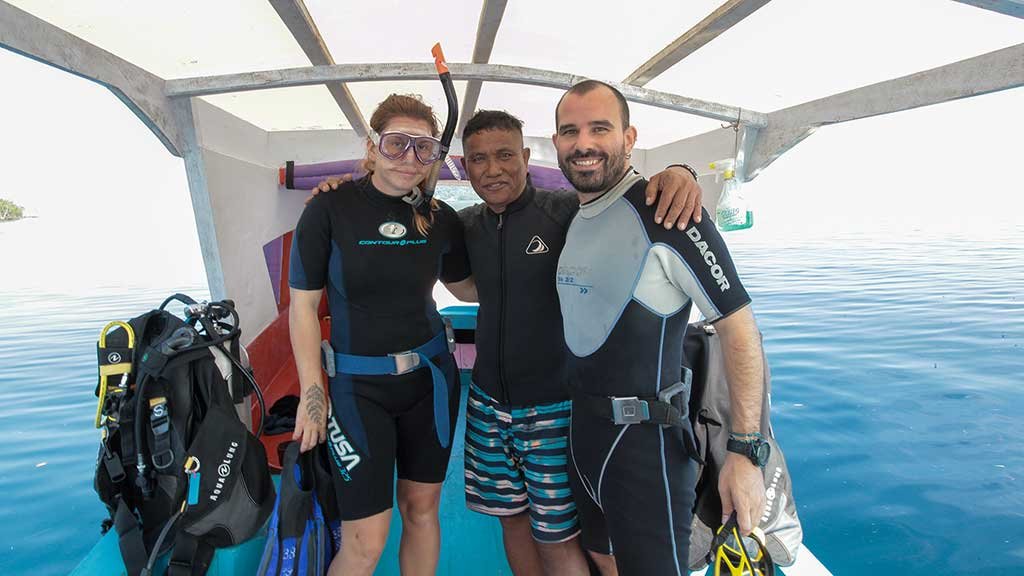Dive Bunaken, the marine park that has the highest marine biodiversity in the world
4Sisters Divers Bunaken has a small dive shop offering diving and snorkeling trips around Bunaken Island and other nearby islands such as Siladen Island and Manado Tua Island
The dive shop is run by local PADI dive instructor, Herol Caroles, who learned diving back in 2006 and started his diving career at Living Colours Dive Resort as a dive guide from 2008 until 2010. He then moved to Minahasa Lagoon for a year before joining the team of the Amira Liveaboard which enriched his experience diving some of the famous diving destinations such as Bali, Komodo, Banda Sea, Forgotten Island, Ambon, and Raja Ampat. He then decided to start working as a freelance at other liveaboards namely Indo Siren Liveaboard, Dewi Nusantara, and the chartered boat Walendreng which took him diving in Fakfak and Cedrawasih Bay in West Papua. His last career as a freelance was with the Sevenseas Liveaboard before he went to Bali in 2017 to take his PADI Instructor Course and then decided to go home to Bunaken where he was born and grew up. Now he is running 4Sisters Divers and its small dive shop.
Herol will ensure your diving holiday in Bunaken as fun as possible in his hands with safety as his main concern.
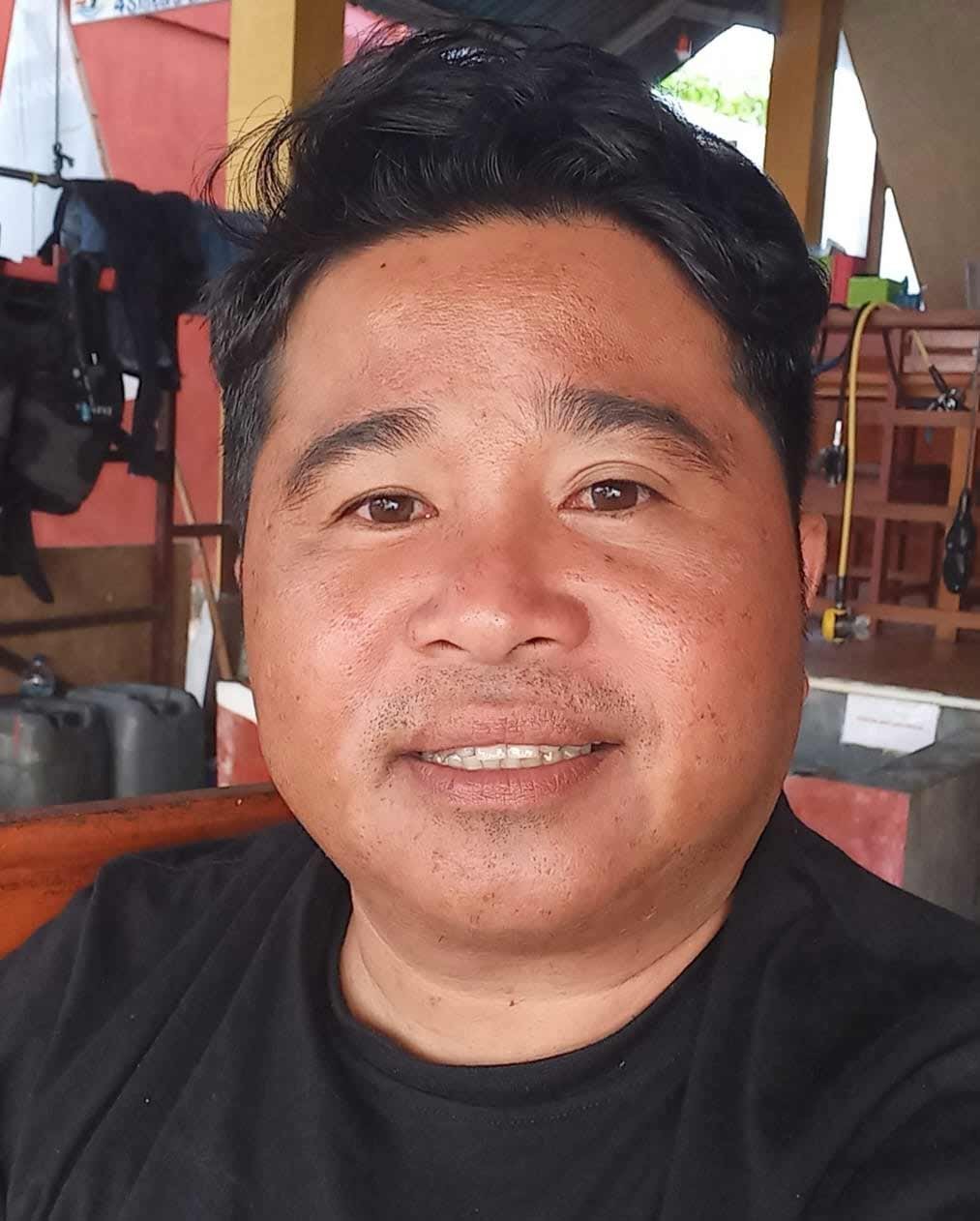
Herol Caroles
PADI Instructor #404260
Diving Rates
Dive Courses
| Diving Activity | No. of Dives | Price in IDR |
|---|---|---|
| Introduction Dive | 2 | 1.200.000 |
| Discover Scuba Diving | 2 | 650.000 |
| Refreshment Dive | 2 | 950.000 |
| Open Water Dive Course | 6.200.000 | |
| Advanced Open Water Dive | 5.250.000 | |
| Emergency First Response Course | 3.500.000 | |
| Rescue Diver Course | 5.850.000 | |
| Divemaster Training Course (PADI Material Included) | 35.000.000 |
Fun Dive
| Diving Activity | Price in IDR |
|---|---|
| 1 Day Dive | 550.000 |
| 2 Day Dives | 850.000 |
| 3 Day Dives (same day) | 1.300.000 |
| Night Dive | 600.000 |
About Bunaken National Park
Geographical Location and Area
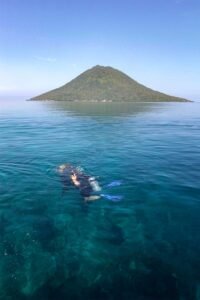 Geographically, Bunaken National Park is located between 1037′-1047′ North Latitude and 124004′-124048′ Longitude. Bunaken National Park is located at the northeastern tip of Sulawesi, and is administratively located in Wori District, Manado Municipality, Minahasa Regency, North Sulawesi Province. The national park which is about 18 km from Manado has an area of about 89,065 ha.
Geographically, Bunaken National Park is located between 1037′-1047′ North Latitude and 124004′-124048′ Longitude. Bunaken National Park is located at the northeastern tip of Sulawesi, and is administratively located in Wori District, Manado Municipality, Minahasa Regency, North Sulawesi Province. The national park which is about 18 km from Manado has an area of about 89,065 ha.
The area of this park is about 97% in the form of sea waters and the rest is land. The islands in this national park area consist of Bunaken Island, Manado Tua, Mantehage, Nain, and Siladen along with the surrounding islands. The population in the area is around 21,000 people.
The Bunaken Marine National Park area has three main zones, namely the core zone, utilization zone, and other zones. The core zone is an area for nature conservation and habitat protection. The utilization zone is utilized for natural tourism which consists of an intensive use zone and a limited use zone. Utilization in terms of dynamic ecology is not only marine biota, habitat, and regional ecosystems, but also involves residents related to the use of natural resources and areas.
Bunaken Laut Marine National Park
Climate and Topography
The climate in this region is influenced by the west monsoon climate. It is estimated that during November to March, there will be a westerly wind with a fairly large sea accompanied by rain, but it is still safe for tourists to visit. Entering April to October there is a wind with quite calm sea waves and not accompanied by rain. Rainfall ranges from 2,000-3,000 mm/year with 90-130 rainy days. Air humidity reaches 50% -68% / year with a temperature of 260C-310C.
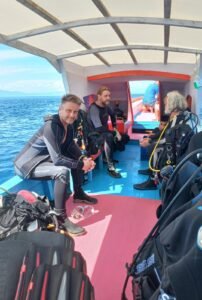 Bunaken Marine National Park has an area of water with a topography that varies from sloping, flat, to steep. There is a mountain that is no longer active, namely Mount Manado Tua with an altitude of 400 meters above sea level with protected forest at its peak. Coral reefs are also found on the edge of steep cliffs. On Nian Island there are also barrier reefs that surround the lagoon and coral reefs.
Bunaken Marine National Park has an area of water with a topography that varies from sloping, flat, to steep. There is a mountain that is no longer active, namely Mount Manado Tua with an altitude of 400 meters above sea level with protected forest at its peak. Coral reefs are also found on the edge of steep cliffs. On Nian Island there are also barrier reefs that surround the lagoon and coral reefs.
Although ocean currents are often volatile and very strong, this area is not a potential storm. The waters in this bay are very deep, Manado Bay itself has a depth of 1,566 m with clear water so you can see up to 35-40 meters. The temperature is around 270C – 290C and has a high level of species diversity.
Biodiversity and Ecosystem
Bunaken Marine National Park is located in the coral triangle area and is a habitat for about 390 species of coral reefs and fish, mollusks, reptiles, and marine mammals. This national park is an Indonesian marine ecosystem that includes sea grass, coral reefs, coastal ecosystems, and mangrove forests with an area of approximately 1,800 hectares.
The mangrove forest is dominated by Rhizosphora sp. and Eonneratia sp. Seaweed (Enhalus sp. and Thalassia hemprichii) grows around coral reef flats in shallow water zones. Seaweed is a habitat for small fish and crustaceans as well as a source of food for herbivores and carnivores, such as sea urchins, dugongs, sea turtles, lobsters, mollusks, seabirds, and other types of fish. The types of algae that grow in aquatic ecosystems are Caulerpa, Halimeda, and Padina.
Terrestrial ecosystems include tropical rain forests at the top of Mount Manado Tua in the form of gardens, fields, and settlements. In the aquatic area there are about 70 genera of corals dominated by species Caulerpa racemosa, Halodule univervis, Pocillopora sp., Seriattopora sp., Porites sp., Fungia sp., Herpolitha sp., Halomitra sp., Galaxea sp., Pectinia sp., Lobophylia sp., Echinopora sp., Leptoria sp., Tubastrea sp., Acropora sp., Turbinaria sp., Millepora sp., Montipora sp., and Thalassodendron ciliatum.
The coral reef area has an area of about 8,000 ha consisting of fringing, barrier, and patch reefs with good conditions. All islands around the national park are surrounded by reef plates, except for the island of Manado Tua.
The open sea area is dominated by phytoplankton and zooplankton species, as well as aquatic biota species, such as dugong (Dugong dugon), giant clam (Tridacna gigas), sand clam (Hippopus hippopus), green turtle (Chelonia mydas), hawksbill turtle (Eretmochelys imbricata). , leatherback turtle (Dermochelys coriacea), Cypraea sp., Conus sp., Trochus sp., Torbus sp., Balistoides niger., Euxiphipopsnar vacha sp., ornamental fish such as Hippocampus sp., Lucanids lethrinids, Carangids, Singanids, parrotfish ( Bolbometopon muricetum), Anthias sp., Aulostomus chinensis, Balistidae, Blenniidae, Caesionidae, Carangidae, Chaetodontidae, Dasyatididae, Ephippidae, Haemulidae, Labridae, Latimeria menadoensis, Lutjanidae, Mobulidae, Murenidae, Platycephalidae, Sphyra, Selachiiidae, Sphyraidae, Syncorpanidae Tetradontidae, and Zanclus cornutus.
Habitat on land is surrounded by palm, sago, woka, silar, and coconut plants. Mango trees, bananas, and other fruit trees are scattered around the national park area and are a source of food for birds and bats. The coastal area is also a habitat for various types of birds.
In forested areas there are yaki or Sulawesi black monkey (Macaca nigra), bear cuscus (Ailurops/ Phalanger ursinus), Sulawesi pygmy cuscus (Strigocuscus celebensis), tarsier (Tarsius spectrum), Sulawesi pig (Sus celebensis), lizard (Mabuya multifasciata), green snake (Ahaetulla prasina) and sea snake (Laticauda colubrina).

